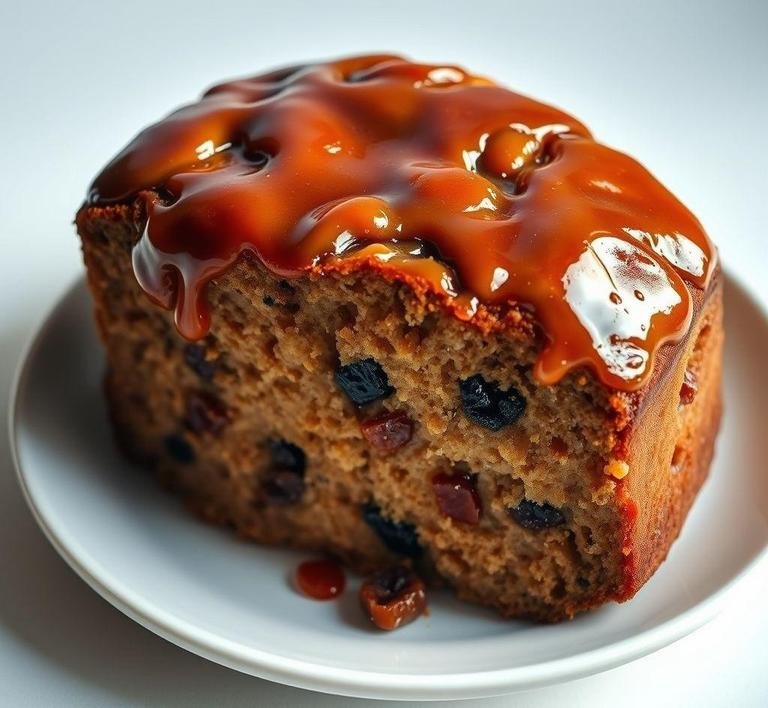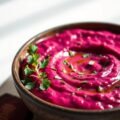This cake is a festive treat that beautifully combines the sticky, caramel-like sweetness of dates with the bright, citrus punch of marmalade. Unlike traditional Christmas cakes that are loaded with an array of dried fruits soaked in booze for weeks, this one is more approachable, quick to make and yet just as indulgent. Nigella’s recipe brings a modern vibe to a classic seasonal dessert-imagine a soft, moist crumb infused with the lovely bitterness of orange marmalade and those dates? They add a natural sweetness and a chewy texture that’s utterly irresistible.
For me, this cake felt like a cozy hug on a plate during the holidays, perfect for sharing with family and friends without the stress of a complicated fruitcake recipe. It’s not overly heavy, so even after a big Christmas dinner, it feels like a welcome treat rather than a guilty overload.
Nigella Date And Marmalade Christmas Cake Recipe
Ingredients Needed

Here’s the lineup of ingredients you’ll want to gather before diving in. it’s a comforting mix of pantry staples and festive favorites:
- Dates: The star fruit here. I usually go for Medjool dates because they’re naturally sweet and juicy.
- Orange Marmalade: Choose a good quality one, preferably with chunks of orange peel. This adds texture and that slightly bitter tang that balances the cake.
- Self-raising Flour: Keeps the cake light and airy.
- Butter: I always use unsalted but salted works too if you like a bit of that extra depth.
- Brown Sugar: Adds a lovely molasses note.
- Eggs: The glue that holds everything together.
- Milk: Just a splash to bring the batter together smoothly.
- Baking Powder: For a gentle rise.
- Ground Cinnamon & Mixed Spice: These warm spices are the silent heroes, giving the cake its festive aroma.
- Vanilla Extract: For a subtle, sweet depth.
- Chopped Nuts (optional): Walnuts or pecans add a pleasant crunch if you fancy.
Honestly, I love how the ingredients feel familiar yet come together in such an unexpectedly delightful way.
Equipment Needed
This cake doesn’t demand much in terms of fancy kitchen gear which makes it even more approachable:
- A mixing bowl (or two)
- An electric hand mixer or a good old-fashioned wooden spoon (for the arm workout)
- A cake tin – Nigella’s recipe usually calls for a round 8-inch (20cm) cake tin, lined with parchment paper to keep it from sticking.
- A measuring jug and measuring spoons to keep everything precise but stress-free.
- A spatula for folding the ingredients gently.
- An oven preheated to around 160-170°C (325°F), because that slow baking is what gives the cake its tender crumb.
I remember using my grandmother’s trusty cake tin for this one and it somehow felt like passing down a bit of warmth through generations.
Instructions To Make Nigella Lawson’s Date And Marmalade Christmas Cake
Ready for the fun part? Here’s how I bring this beauty to life step by step:
- Prep the Dates: Chop your dates into small pieces. If they’re a bit dry, soak them briefly in hot water to soften, then drain.
- Mix the Wet Ingredients: Cream the butter and brown sugar together until fluffy. this always reminds me of childhood baking afternoons, the smell of sugar and butter melding is pure comfort.
- Add Eggs and Marmalade: Beat in the eggs one at a time, then stir in the orange marmalade and vanilla extract. This is when the cake batter starts to smell like Christmas in the making.
- Combine Dry Ingredients: In a separate bowl, sift together the flour, baking powder, cinnamon and mixed spice. This step is crucial to keep the spices evenly distributed.
- Bring it All Together: Fold the dry ingredients into the wet mixture gently, alternating with the milk. Then fold in the chopped dates (and nuts, if you’re using them).
- Bake: Pour the batter into the prepared tin and bake for about 1 hour to 1 hour 15 minutes. You want to check after an hour by poking with a skewer. it should come out clean or with just a few moist crumbs.
- Cool and Serve: Let the cake cool in the tin for a bit, then transfer to a wire rack. I love to wrap mine in parchment and let it sit overnight; the flavors deepen and the cake becomes even more tender.
There’s something magical about that moment when the cake is out of the oven, filling the kitchen with its citrus-spiced warmth. It’s the kind of aroma that invites everyone in the house to gather round.
What I Learnt
Making this cake taught me a few important lessons beyond just the recipe:
- Simplicity can be festive: You don’t need a dozen ingredients soaking for weeks to create a Christmas cake that feels special and indulgent. Nigella’s recipe proves that a few well-chosen flavors can deliver a powerful punch of holiday cheer.
- Texture matters: The combination of sticky dates and slightly chewy orange peel from the marmalade creates a texture that’s far more interesting than a typical dense fruitcake.
- Patience pays off: Letting the cake rest after baking really enhances the flavors. It’s worth the wait.
- Baking is about memories: Using family tools, baking while listening to holiday music and sharing the cake with loved ones made this recipe feel more like an experience than just a task.
FAQs
Can I Make Nigella’s Date And Marmalade Christmas Cake Ahead Of Time?
Absolutely! In fact, it’s one of those cakes that gets better the longer it sits. I always make mine a week or two before Christmas so the flavors have time to meld together. Just make sure to wrap it well and store it in an airtight container, and it’ll stay fresh and delicious.
Can I Substitute The Dates In Nigella’s Christmas Cake Recipe?
Yes, you can! If you’re not a fan of dates, you can swap them out for raisins or sultanas. However, the dates add a lovely depth of sweetness and richness, so the cake might be a bit lighter without them. I personally wouldn’t miss them, but it’s your call!
How Do I Ensure The Marmalade Flavor Isn’t Too Overpowering In This Cake?
Great question! The trick is to pick a marmalade that isn’t too bitter. I always go for a nice, sweet orange marmalade with just a little tang. If you’re worried about it being too strong, start with a little less than the recipe suggests, and then taste-test. You can always add more if you want it punchier.


